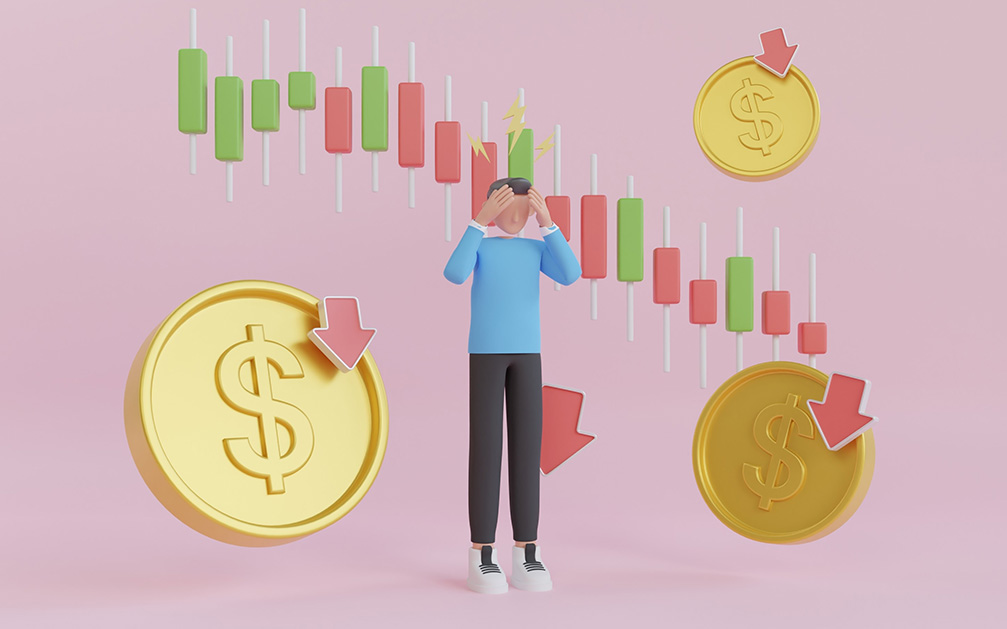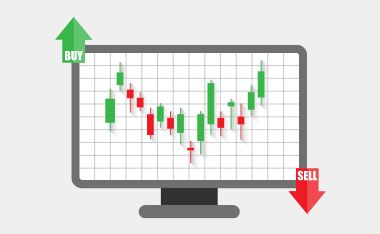Your Trading Method / Edge

Your Trading Method is your “Rules of Engagement” document that details the indicators, triggers and “Hot Spots” that give you the OK to enter a trade, hold in a trade and Exit at the “best time”
It’s important to note that no trading method is 100% Infallible – not all trades will be positive.
Your Trading Method should give you the opportunity to enter and exit trades with the highest probability of producing MORE profitable trades than unprofitable trades.
What is a Trading Method?
Literally speaking, a trading method is a set of rules and guidelines that traders use to identify potential trading opportunities in the financial markets.
Your trading method can be based on technical analysis, fundamental analysis, or a combination of both. Of course, this means that you should have a solid education about the markets you trade and what it takes to be a profitable trader.
A trading method can either be bought (LIFT Investor Trader includes the use of our High Probability LIFT Trading Method), or developed through back-testing, which involves testing a trading strategy against historical market data to determine its effectiveness.
A successful “robust” trading method is composed of several different components that work together to identify high probability trade entries, manage the trade, and minimize losses.
One of the most important aspects of a trading method is risk management.
Risk management involves setting specific rules and guidelines for how much risk to take on each trade and how to minimize losses in case the trade does not go as planned.
Effective risk management is critical to long-term trading success and can help traders weather the ups and downs of the market.
Another key component of a trading method is finding high probability trade entries.
This involves analysing the market and identifying potential trade setups that have a higher likelihood of producing the profit you’re looking for in the time you want.
Traders may use various technical indicators, chart patterns, or other analysis techniques to identify these trade opportunities. Take time to find the right combination of strategies that is more likely to produce the outcome you desire.
Once a high probability trade entry has been identified, the trader will then set specific criteria for managing the trade, such as the use of stop-loss and take-profit levels.
Managing the trade is another important component of a trading method.
This involves monitoring the trade as it progresses and adjusting stop-loss and take-profit levels as needed.
It may also involve using trailing stops to lock in profits as the trade moves in the trader’s favour.
Effective trade management requires discipline and a willingness to stick to your trading plan, even when emotions are running high. Trust in your method and build your patience and discipline to trade according to your method.
By incorporating all of these different components into their trading method, traders can increase their potential for success and achieve more consistent profits over time.
The Importance of Having a Good Trading Method
Having a consistent, profitable trading method is essential for traders looking to achieve consistent profits in the financial markets.
A detailed, easy to follow and effective trading method provides traders with a systematic approach to trading, reducing the impact of emotional decision-making and increasing the likelihood of success.
Having a trading method provides more than just business benefits that contribute to a trader’s success.
One of the main benefits is the improvement of the trader’s mindset. By having a well-defined trading method, traders can avoid emotional trading decisions and stick to their plan.
This helps traders to develop discipline, patience, and confidence in their trading approach, which is essential for long-term success in the markets.
Another benefit of having a trading method is consistency, where, by following the method, you are able to replicate their results over a period of time.
A well-defined trading method helps traders to achieve consistency in their trading by providing clear guidelines on how and when to enter and exit trades.
Consistency is crucial in trading as it allows traders to assess their performance accurately and make necessary adjustments to their trading strategies.
Last and certainly not least, having a trading method is also important for the growth of a trader’s trading business.
Traders who have a clear trading plan and follow it consistently are more likely to attract investors and grow their business.
This, in turn, allows traders to grow their business and take their trading to the next level.
Analysing the Current Market
To effectively find profitable entry points and exit points, your trading method should help you to analyse the current market to identify potential trading opportunities.
Analysing the current market is an essential component of any high probability trading method.
To start, traders need to understand the different types of traders that exist in the market.
There are position traders, who hold trades for weeks or even months at a time.
Swing traders, on the other hand, typically hold trades for several days.
Finally, day traders enter and exit trades within the same day.
By analysing the market, traders can determine where these different groups of traders will participate in the market on a given day.
For example, if a trader determines that there is strong support at a particular price level, they may expect position traders to be interested in entering long positions at that level.
This information can be used to inform the trader’s own trading decisions.
They may decide to enter a long position themselves, or they may decide to wait for a more favourable entry point once the position traders have made their moves.
Technical analysis involves analysing market data, such as price and volume, to identify trends and patterns that can indicate potential trading opportunities.
Fundamental analysis involves analysing economic and financial data to identify potential trading opportunities based on the underlying fundamentals of a market.
This analysis can be based on technical analysis (reading of your method indicators over multiple timeframes to find the prevailing overall pressure and how traders are responding), fundamental analysis (considering announcements that are coming up during the trading session to find currency strengths and weaknesses), or a combination of both.
Another way to analyse the current market is to pay attention to economic news and events.
Economic indicators such as GDP, inflation rates, and interest rates can all have a significant impact on currency prices.
By staying up-to-date with the latest economic news and events, traders can better understand the market’s current state and make more informed trading decisions.
For example, if a country’s central bank announces an interest rate hike, this can cause its currency to appreciate.
A trader who is aware of this news may decide to enter a long position in that currency to take advantage of the anticipated price increase.
Traders should also consider the broader market conditions when analysing potential trades.
Market volatility, liquidity, and other factors can impact the success of a trade, and traders should consider these factors when developing their trading method.
Analysing the current market is crucial for any trader looking to develop a high probability trading method.
By understanding the different types of traders in the market and paying attention to economic news and events, traders can better anticipate market movements and make more informed trading decisions.
This, in turn, can lead to more consistent profits and greater long-term success in the world of forex trading.
Trade Entry Criteria
Trade entry criteria are the rules that traders use to identify potential trading opportunities.
These criteria should be based on the trader’s analysis of the current market and should take into account factors such as market trends, volatility, and liquidity.
Trade entry criteria are a vital component of any high probability trading method.
This is because not all market conditions offer profitable opportunities.
Filtering potential trades based on specific criteria helps traders identify the highest probability trades that are most likely to produce profit using their trading method.
One key factor to consider when filtering trade entries is the trend. It is generally easier to make profitable trades when the market is trending, so traders may look for trades that align with the current market trend.
Another important consideration for trade entry criteria is volatility.
This refers to the magnitude of price movements in a given market.
High volatility can provide opportunities for traders to make significant profits, but it can also increase risk. Traders may look for opportunities that offer a balance between high volatility and manageable risk.
For example, a trader may look for a market that has been consolidating for a period of time before a sudden surge in volatility indicates that a breakout is imminent.
In addition to trend and volatility, traders may use technical analysis indicators to filter trade entry opportunities.
For example, a trader may use a moving average crossover strategy, where a shorter-term moving average crosses above a longer-term moving average, as a signal to enter a trade.
Alternatively, a trader may use price action patterns, such as a double top or bottom, as a signal to enter a trade.
By using specific criteria to filter trade entry opportunities, traders can increase their chances of success and achieve a higher probability of profitability over time.
Traders should define their trade entry criteria before executing any trades. This ensures that traders do not enter trades based on emotions or impulses but rather on a clear set of rules that have been developed through careful analysis.
Trade Exit Criteria
A crucial part of any trading method is the trade exit criteria.
Traders should define their trade exit criteria before executing any trades.
This ensures that traders do not hold onto losing trades for too long, potentially exposing themselves to excessive risk.
By having predefined exit criteria, traders can exit trades with confidence, knowing that they are protecting their trading capital.
Exiting a trade at the right time can be just as important as entering it. It is crucial to determine the level at which you will take profit or cut losses before entering a trade.
Having a set profit target or stop loss can help you avoid making emotional decisions while in the trade.
One approach to setting profit targets is to use support and resistance levels, which are areas of buying and selling pressure respectively.
These levels are identified through technical analysis, and can provide a clear indication of where the price may reverse or continue.
By setting a profit target at these levels, you can lock in profits and avoid holding onto a trade for too long.
Another approach to trade exit criteria is to use a trailing stop loss.
This involves moving the stop loss level in the direction of the trade as the price moves in your favour.
This allows you to lock in profits as the price continues to move in the desired direction, while also protecting against sudden price reversals.
In addition to setting clear profit targets and stop losses, it is important to stick to them once they are set.
This requires discipline and a willingness to accept losses when they occur.
By following a consistent approach to trade exits, you can avoid the temptation to hold onto a losing trade for too long, which can result in significant losses.
In Conclusion
In conclusion, a high probability trading method is the foundation of success in Forex trading.
It provides a trader with a framework to operate within, taking into account risk management, market analysis, trade entry and exit criteria, and consistent implementation.
With a reliable trading method, a trader can manage their emotions and make rational decisions based on sound analysis and criteria.
Furthermore, having a trading method allows a trader to track their progress, measure their success and identify areas that require improvement.
By continuously analysing and refining their trading method, a trader can enhance their performance and increase their profitability over time.
In the competitive world of Forex trading, it is essential to have a well-developed and consistently implemented trading method.
By investing in a trading method that is robust, proven, and tested, traders can establish a profitable and sustainable trading business.
Ultimately, the key to success in Forex trading lies in having a high probability trading method, followed with discipline and consistency.
More Information
For more trading term general definitions, visit our A to Z of Forex Trading
To look at these concepts in action, please visit our sister site, Latest Forex Rates
What to do Next
If you have more questions or need further guidance, don’t hesitate to reach out to us at The Trading Coach International for personalized coaching and support.
If you would like to learn more about trading forex profitably and what steps you can take next to get on the right track to build your Lifestyle Income From Trading, you can book an no obligation, Free Strategy Call with our Lead Trading Coach by clicking on THIS LINK
Disclaimer
The information, strategies, techniques and approaches discussed in this article are for general information purposes only. The Trading Coach International does not necessarily use, promote nor recommend any strategies discussed in this article. The information in this article may not be suitable for your personal financial circumstances and you should seek independent qualified financial advice before implementing any financial strategy. The Trading Coach International is not a financial advisor and does not have AFS registration.




















